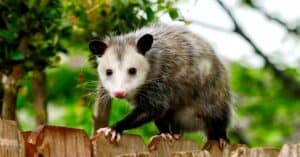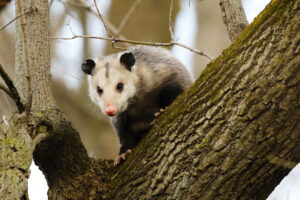Opossums are the only marsupials living in the US and Canada. They are cat-sized animals with a characteristic pointed snout and long grey fur. The largest weigh over 13 pounds! They are solitary mammals who can survive in a range of climates and habitats. To shelter, they create dens in tree cavities and under brush piles but have also discovered that human houses are a convenient place to hang out! Opossums have a habit of setting up home in attics. This is most likely to happen in May and June when mothers are rearing their young and in December and January when it is cold outside.
Because opossums are active at night, you may never actually see them! However, there are some telltale signs there are opossums in the attic. Here are eight of them!
1.Damage to the Exterior of Your Home
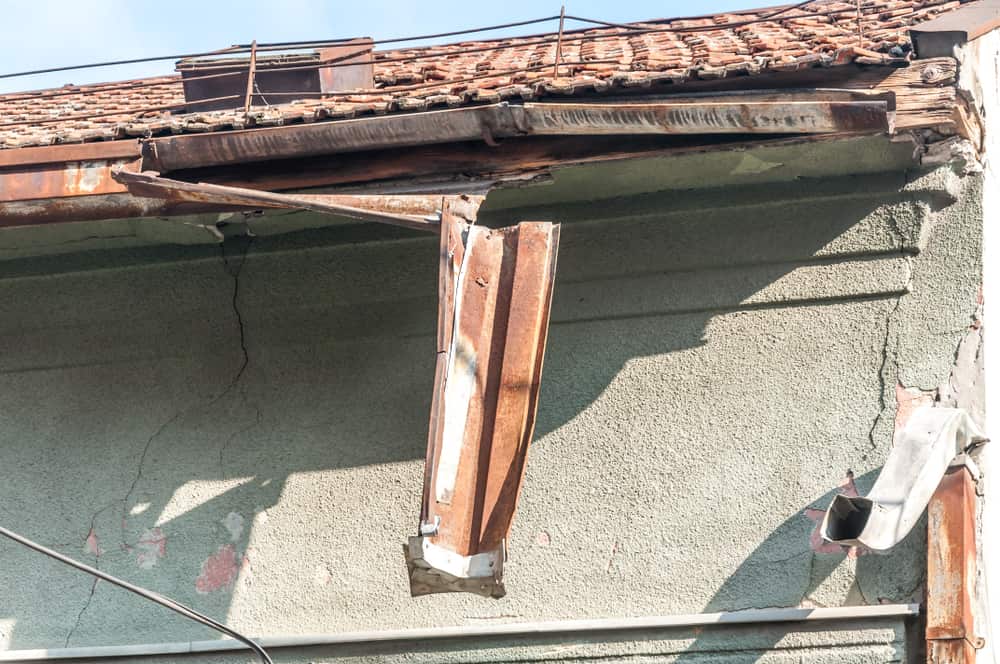
Opossums gain access to attics via damaged building structures.
©Srdjan Randjelovic/Shutterstock.com
2. Presence of Droppings (Scat) and Footprints
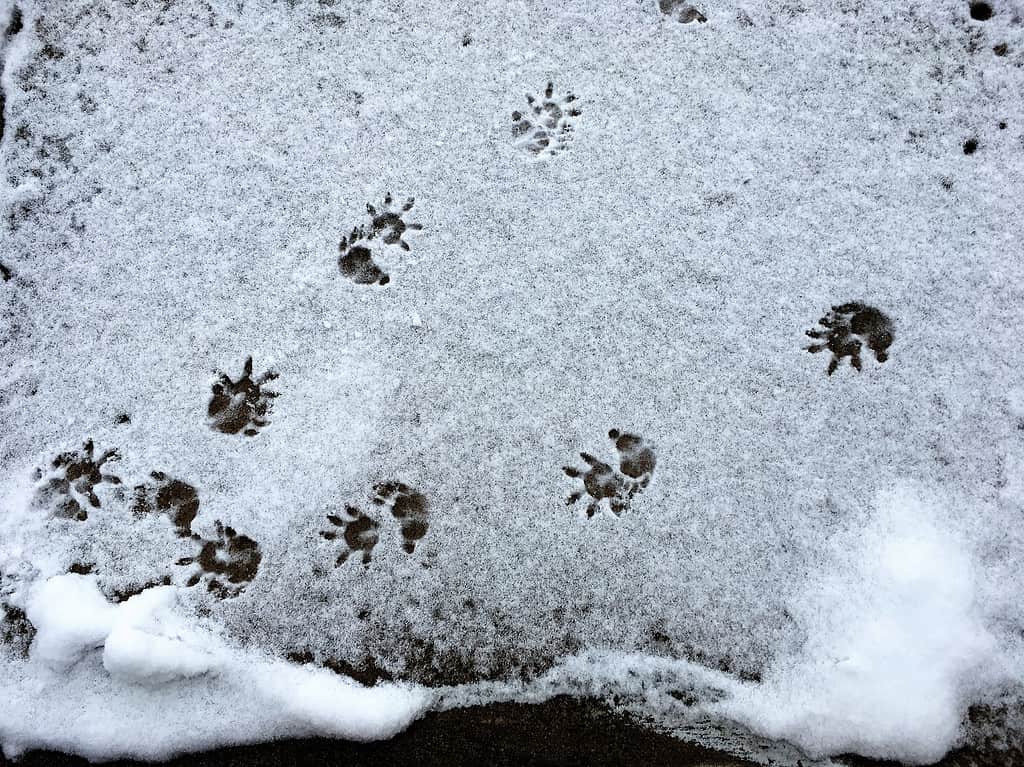
Opossums leave unique tracks in snow.
©jelloyd/Shutterstock.com
Opossum scat is large and they produce a lot of it! If you have opossums in your attic you will definitely see a lot of it! Opossum scat is usually about as large as cat poop and pointed at the edges. However, these guys have a varied diet and their poop varies with what they have been eating. Also, opossums leave characteristic footprints in sand, soils, and soft ground.
3. Damage to Insulation, Structures and Wires

Opossums do not gnaw like rats but still have sharp teeth!
©iStock.com/rexlis
Opossums chew insulation and other structures in the attic either to make entry holes larger or to create nests. They can cause considerable damage to ducts and insulation. Also, if they get trapped, they will attempt to scratch and chew their way out causing even more damage. Whilst they do not gnaw in the same way as rodents, they can still damage delicate wiring.
4. Strange Sounds

Opossums are nocturnal and you may mainly hear them at night.
©randimal/iStock via Getty Images
You may hear the opossums moving around. They are nocturnal and make slow thumping noises. This is very different to the rapid, scampering noises made by rats and squirrels.
They are also quite vocal and make a range of sounds! You may hear what sounds like coughing, hissing or even shrieking. Mothers make a clicking sound when they are calling their babies.
5. Unpleasant Smells
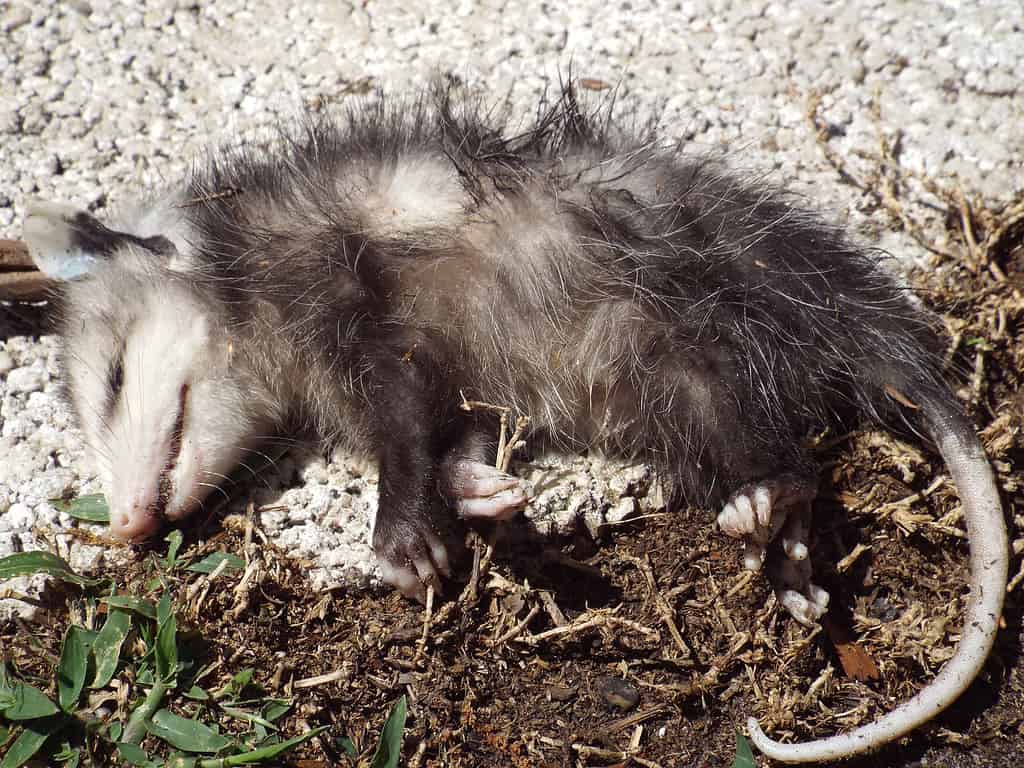
If opossums die in your attic, the smell can spread through the whole house.
©Johanna Boomsma/iStock via Getty Images
Because opossums poop so frequently (and in such large quantities), you are quite likely to smell it. Also, if an opossum dies in your attic or in any of the voids in your house their decomposing body will have a strong smell of decay that will spread throughout the whole house!
6. Stolen Pet Food

Opossums often help themselves to cat food outside.
©Twinschoice/iStock via Getty Images
Cat food is a delicacy for opossums! If you are feeding cats outdoors and the food seems to be disappearing faster than before, they may be pinching it!
7. Nest Building
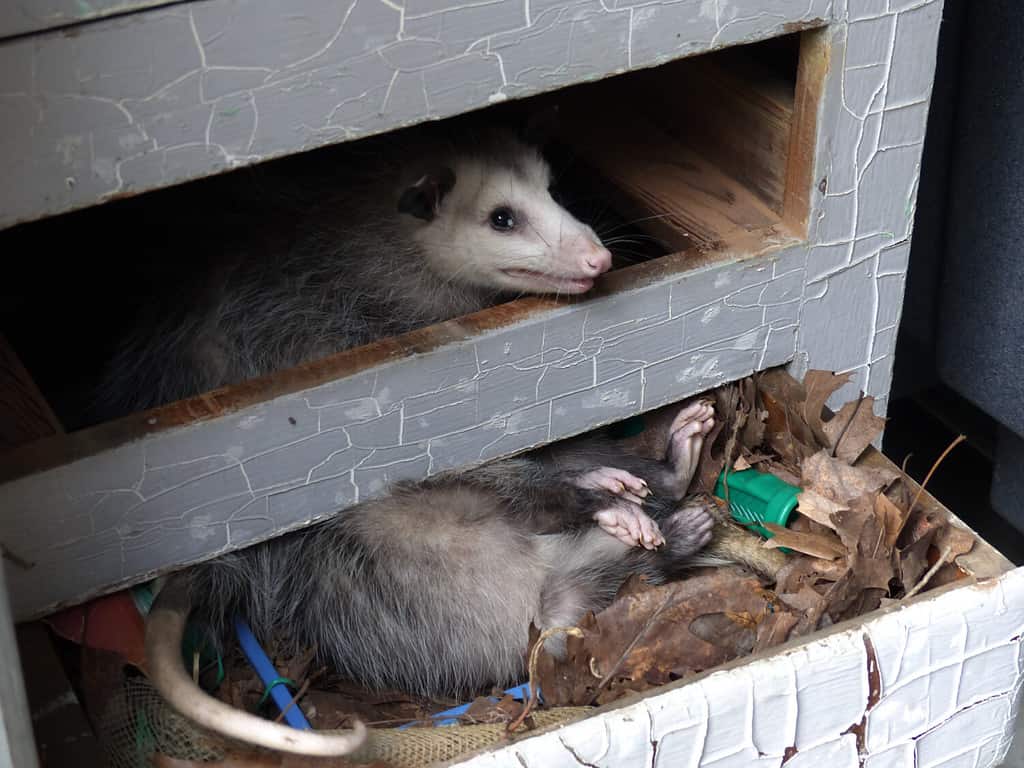
Opossums can cause damage as they are making their nests.
©Lflorot/Shutterstock.com
As the opossums are busy creating somewhere nice to sleep in your attic you may hear ripping, scuttling, and scraping noises. You may also spot where they have been hanging out.
8. Stains on Ceilings
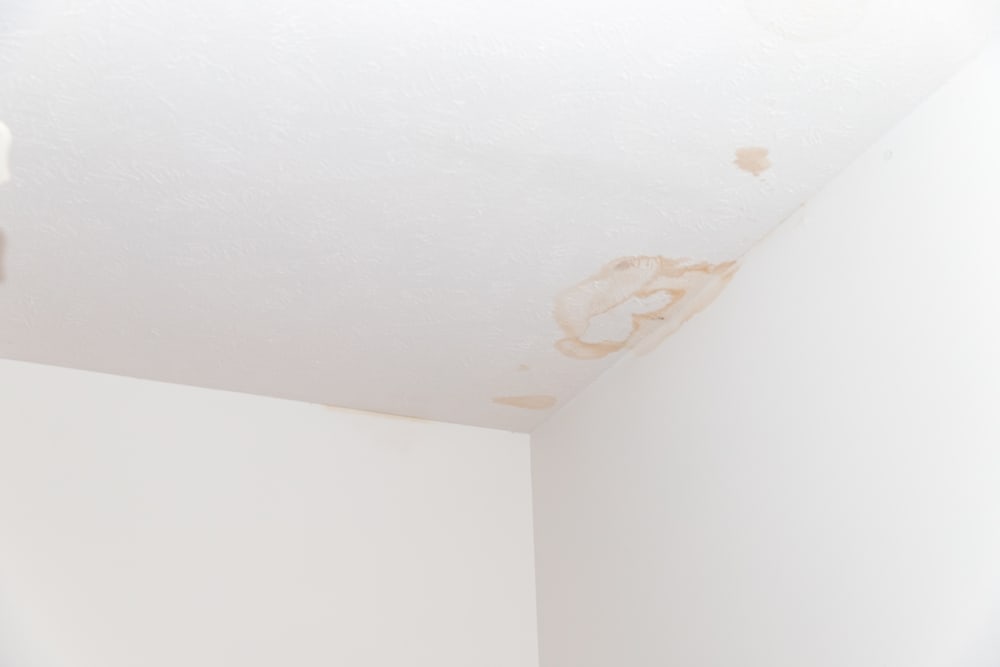
Opposum scat can cause staining on the ceiling.
©Chad Robertson Media/Shutterstock.com
Opossum scat can be quite wet. If it soaks through insulation and ceiling boards, you may notice staining on the ceiling below.
9. Baby Opossums Falling Down Walls
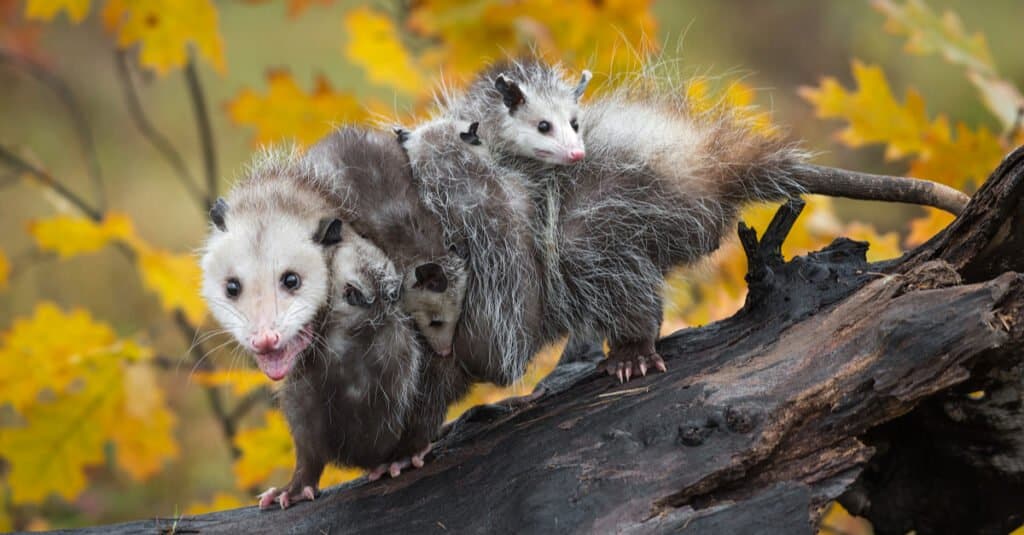
Baby opossums have been known to fall down wall cavities.
©Holly Kuchera/Shutterstock.com
Baby opossums can fall down cavity walls or other voids in the house. They will make a noise if they are trapped and so will the mother if she is trying to reach them.
Why Remove Opossums From Your Attic?
Opossums do not make great house guests. The noise that they make moving around could disturb your sleep and the smells that they make will make your house an unpleasant place to live in.
These visitors can damage the fabric of your property which can be very expensive to repair. Furthermore, opossums carry several diseases including leptospirosis, relapsing fever, and toxoplasmosis. They can also be infested with fleas and ticks and can be an intermediate host for cat and dog fleas. One disease that is particularly concerning is flea-borne typhus which can be spread to humans by the Oriental rat flea and the cat flea. The fleas pick up the disease from infected opossums.
How to Remove Opossums From Your Attic

The best way to rid your home of opossums is by using a human trap.
Image: The Toidi, Shutterstock
©The Toidi/Shutterstock.com
The best way to remove opossums from your attic quickly is by using a humane trap. As you are setting it up it is important that you wear gloves to avoid leaving your scent on the trap. If they smell you they won’t go near it! Also, remove all other sources of food so that the food in the trap is more enticing. Move your trash to sealed containers and store pet food inside.
Place the trap where you have identified there is most opossum activity from noises, damage, and poop. Also, set it on an even surface so it will not be knocked over, and weigh it down with a brick. Bait the trap with something sweet such as a honey bun, near the back so that they have to step on the trigger plate to reach it. Check the trap twice a day. Consult with local experts and the appropriate authorities to find out if and where you should release the animal.
How to Stop Opossums From Coming Back
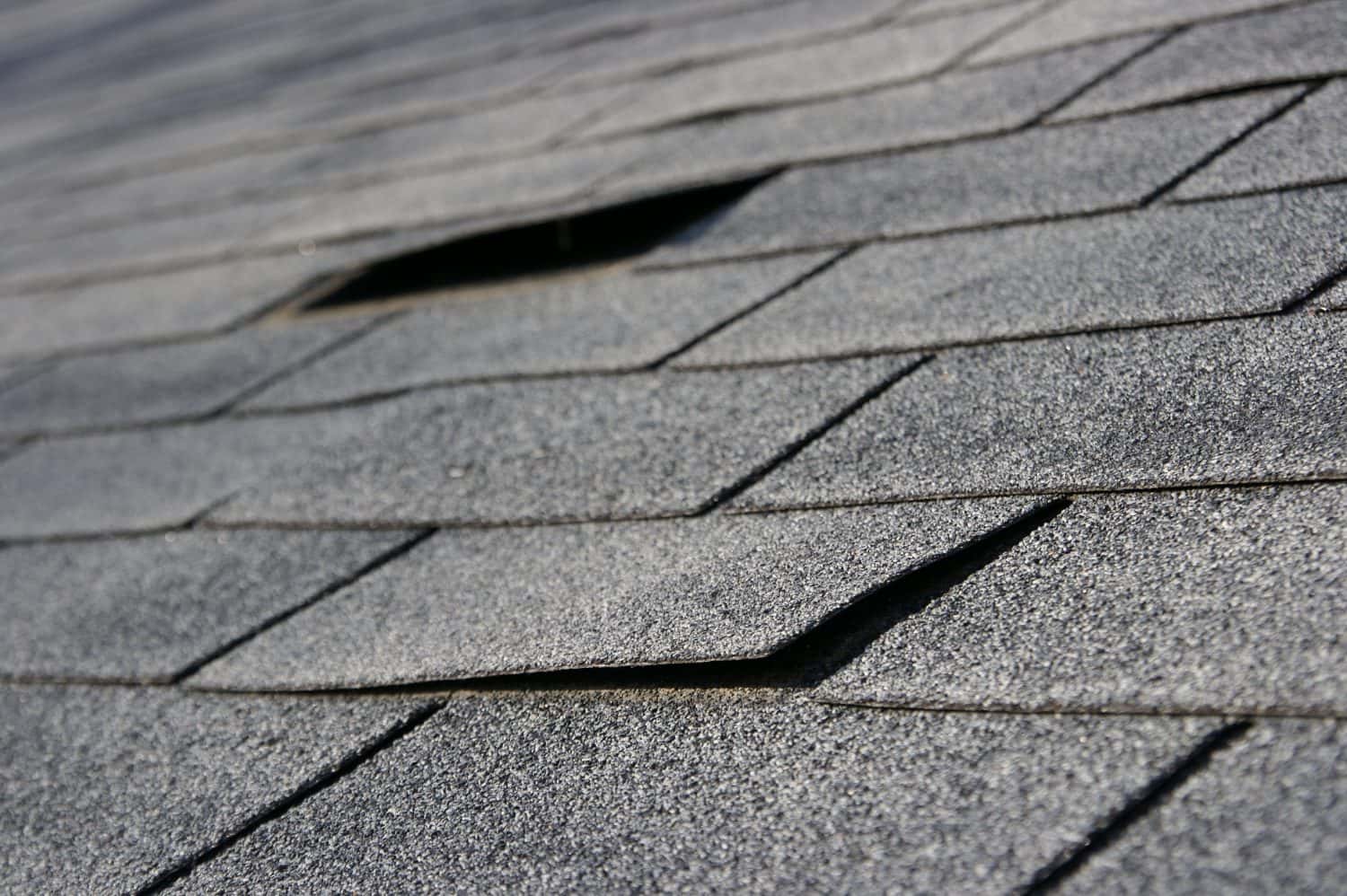
Animals can access your home through damaged roof tiles.
Image: planet5D LLC, Shutterstock
©planet5D LLC/Shutterstock.com
You need to make your property less attractive and more difficult to get into. Start by clearing clutter from your attic so you can easily detect if opossums are living there. It is especially important to remove potential water and food sources including pet food.
You will need to repair any voids or openings that allow them access in the first place. Repair damage to windows, doors, vents and roofing. Don’t forget that these guys can climb!
Also, trim tree branches from the edge of your roof as this is a favorite way for a opossums to gain access to attics.
You can also make your property less attractive to them by using motion activated lights or sprinklers or by leaving tufts of dog and cat fur around your garden!
The photo featured at the top of this post is © Karel Bock/Shutterstock.com
Thank you for reading! Have some feedback for us? Contact the AZ Animals editorial team.




